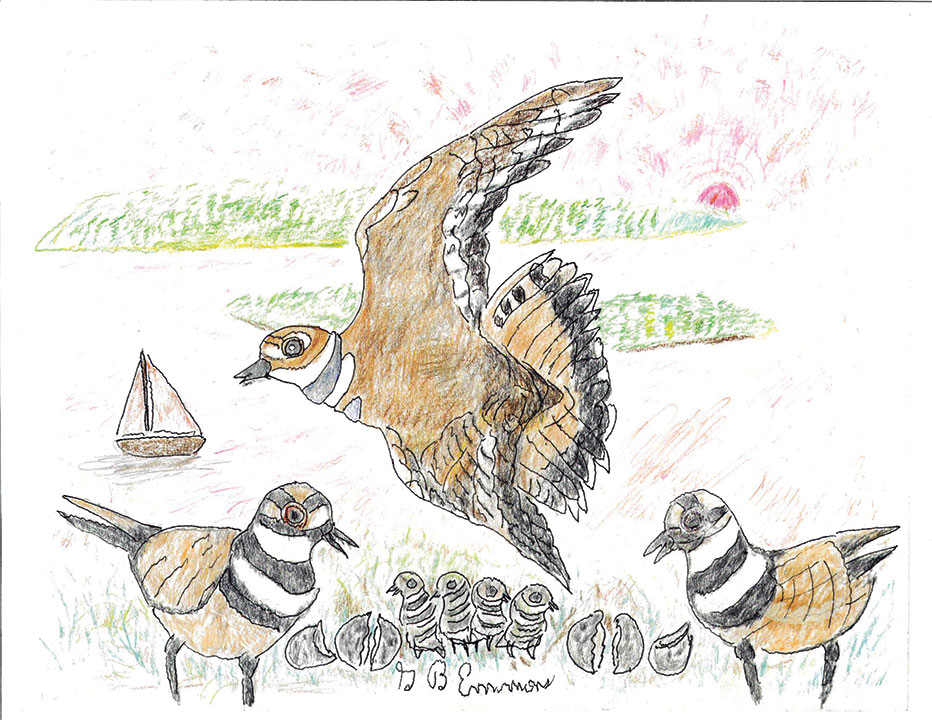The Killdeer Plover is well known for its piping conversational call while running alongside you after you suddenly come upon the location of its nest. The Killdeer is always highly startled to be discovered and identified by a human being such a short distance away and usually runs alongside until stopping to raise its head, bobbing in a wide-eyed astonishment.
The Killdeer is the largest of the coastal plovers with its breeding and reproductive activities usually near open fields of short, thick vegetation to hide its nest from unwanted visitors I have just described.
From the back porch of our seaside home on Little Bay in Fairhaven, recently we were surprised and also thrilled to see and hear a number of plovers flitting and darting along the water’s edge at the very end of a spring day. They were feeding on insects and marshy seed-plant growth along the shoreline until the sun went down and then under a full moon to continued foraging during the night to get ready for the coming breeding season.
They usually return to the same nesting site as last year, usually pair off to the same monogamous parents and lay four mottled eggs that hatch out in about a month to become the precocial chicks illustrated.
The breeding season usually produces two broods per year. The young stay in the nest until the day after hatching when they are led by parents to a feeding territory with dense vegetation where hiding spots are closely abundant.
Their numbers are considered somewhat declining, but the trend is not considered to be a vulnerable species. One of the reasons is their signature parent protection of fingerlings using various methods to distract predators such as “the broken wing display” also known as injury feinting. If that doesn’t work, it crouches, drops its wings and lowers its tail, displaying the alarming flaming orange color of its rump. As a last-ditch effort is the deadly ungulate attack by lowering the head and angrily charging the intruder, which itself is often fatal to the mother plover.
This sacrificial, heroical bravery of such a small parent to a menagerie of much larger predators is a courage passed on from one generation of motherhood that comes shining through without second thoughts of serious consequences.
Perhaps it should also be an awareness in life situations of human beings when they arise unexpectedly. Heaven forbid it might become an alternate of unacceptable options to just leave the nest and young ones behind but perish the thought.
By George B. Emmons
